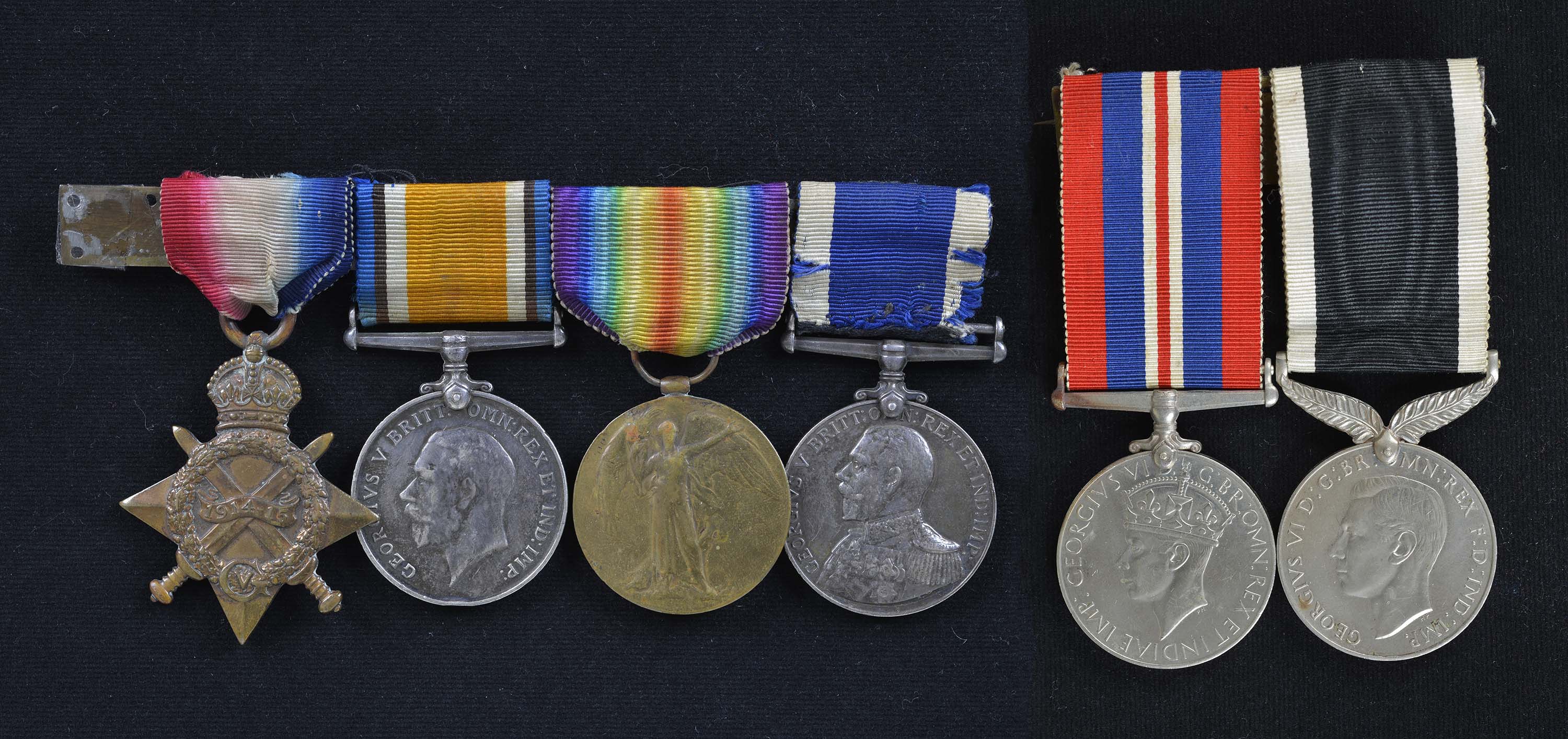

Display No. 11C
WILSHER, Joseph Henry
Joseph Wilsher enlisted in the Royal Navy shortly before the outbreak of the First World War. After training he was posted as a Stoker to the armoured cruiser HMS Achilles, which he served in until early 1919. During the First World War, HMS Achilles mainly served in the Grand Fleet and had a brief stint serving as a convoy escort ship at the North America and West Indies Station. By the end of the war, Wilsher had been promoted to Leading Stoker. He joined the crew of HMS Birmingham in 1919, and remained with the ship for two years. In 1922, Wilsher served in HMS Colombo with the Eastern Fleet. He later served in HMS Revenge which was posted to the Atlantic and then Mediterranean Fleet.
In August of 1928, at which time Wilsher had reached the rank of Petty Officer Stoker, he signed on to serve with the New Zealand Division of the Royal Navy for a three-year term. He spent time in HMS Diomede and HMS Dunedin. In February 1931, Wilsher was on board HMS Dunedin when she went to provide aid to Napier after the Hawkes Bay earthquake. Later that year, he reverted back to the Royal Navy but rejoined the New Zealand Division again in 1932. Wilsher served in HMS Dunedin until 1936, reaching the rank of Chief Petty Officer Stoker in 1933. He took discharge and was pensioned off from the navy on 1st April 1936 after twenty two years of service. Wilsher remained in New Zealand. He joined the Royal New Zealand Navy in 1942 as a mobilised pensioner, and served until the end of the Second World War working at shore establishments in Auckland and Wellington. He married Bettie Jackson, a former Wren in 1949 whose medals are also on display here.
Awarded medal(s)
Medal Description [Left to Right]:
The 1914-1915 Star
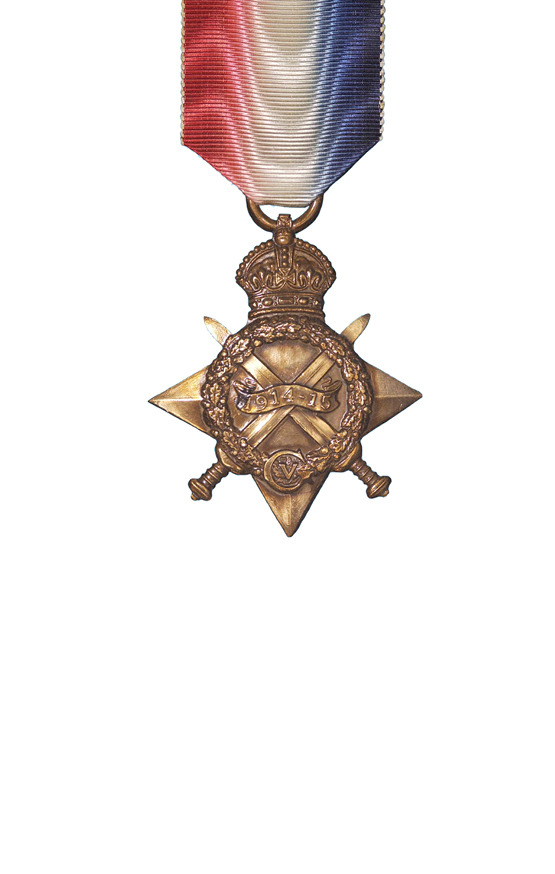
The 1914-15 Star was awarded to servicemen and servicewomen who served in the First World War between 5 August 1914 and 31 December 1915 in any “theatre of war”, provided they had not qualified for the 1914 Star. This included service at Gallipoli between 25 April 1915 and 31 December 1915, service in Egypt between 5 November 1914 and 31 December 1915, and service during the capture of German Samoa on 29 August 1914. Those eligible for the medal must have “served on the establishment of a unit in a theatre of war” during the relevant dates of operations in that area. The ribbon’s red, white and blue shaded and watered bands represent the flag of the United Kingdom.
The British War Medal
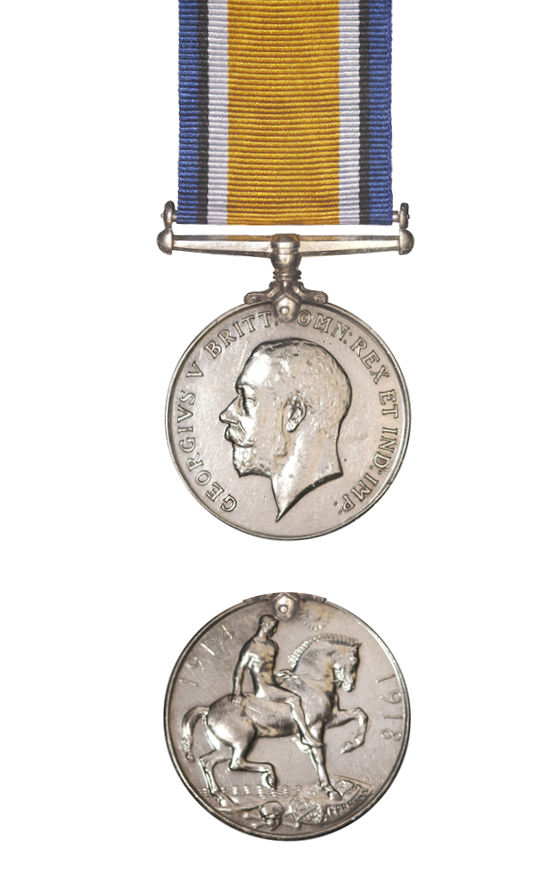
The British War Medal was instituted in 1919 to recognise the successful conclusion of the First World War (1914-1918). Its coverage was later extended to recognise service until 1920, recognising mine clearing operations at sea, and participation in operations in North and South Russia, the eastern Baltic, Siberia, the Black Sea and the Caspian Sea.
The Victory Medal
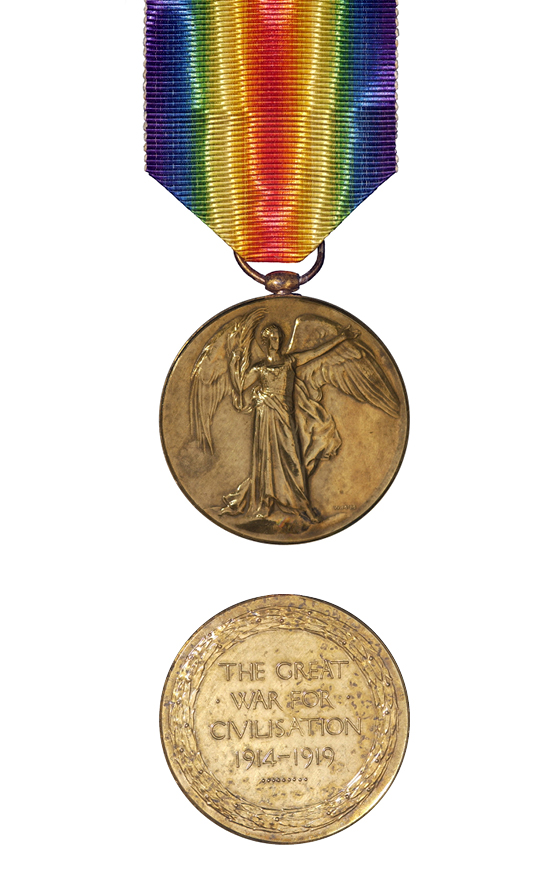
The Victory Medal was awarded in the First World War to all those who had already qualified for the 1914 Star or the 1914-15 Star, and to most persons who had already qualified for the British War Medal. The Victory Medal was awarded to all New Zealand troops serving overseas, except for those who arrived in Samoa after 30 August 1914 and those serving in Great Britain only. It has a unique double rainbow ribbon.
A bronze spray of oak leaves on the medal ribbon denotes that the recipient was Mentioned in Despatches during the period that the medal recognises. To be Mentioned in Despatches a member of the armed forces has had their name mentioned in an official report, written by a superior officer, and sent to a higher command. The report would describe the individual’s gallant or meritorious action in the face of the enemy.
Royal Naval Long Service and Good Conduct Medal
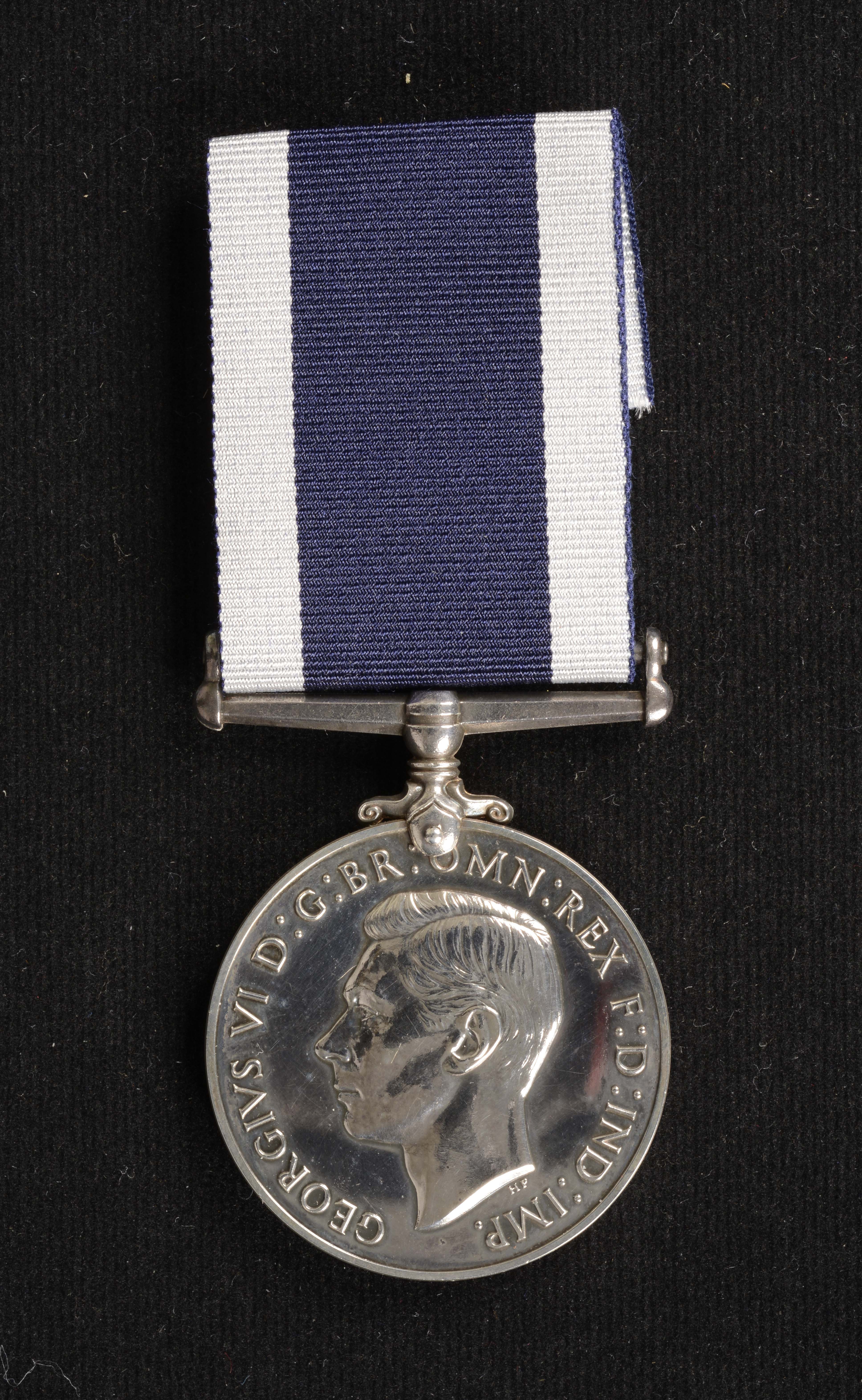
Awarded to ratings who have served a minimum of 15 years in the Royal Navy (previously 21 or 10 years), the first version of this medal was instituted in 1831 and it is still issued to Royal Navy personnel today. It features the reigning monarch’s head on the obverse and HMS Victory on the reverse with the recipient’s details engraved or impressed on the edge of the medal. This medal was also issued to eligible personnel serving in the New Zealand Division of the Royal Navy from 1921-1941 and then to Royal New Zealand Navy personnel from 1941-1981. In 1985 a New Zealand Royal Navy Long Service and Good Conduct Medal was introduced bearing the exact same design.
The War Medal 1939-1945
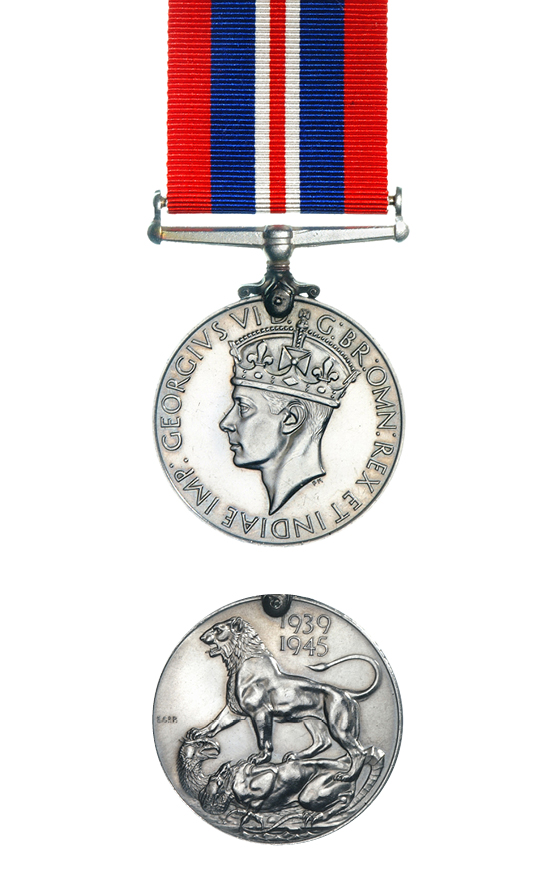
The War Medal 1939-45 was awarded across the British Commonwealth to all full-time members of the Armed Forces in the Second World War for 28 days service between 3 September 1939 and 2 September 1945, irrespective of where they were serving. The ribbon is the red, white, and blue of the (British) Union Flag. There is a narrow central red stripe with a narrow white stripe on either side. There are broad red stripes at either edge, the two intervening stripes being blue.
A bronze oak leaf on the medal ribbon denotes that the recipient was Mentioned in Despatches. To be Mentioned in Despatches a member of the armed forces had their name mentioned in an official report, written by a superior officer, and sent to a higher command. The report would describe the individual’s gallant or meritorious action in the face of the enemy.
The New Zealand War Service Medal
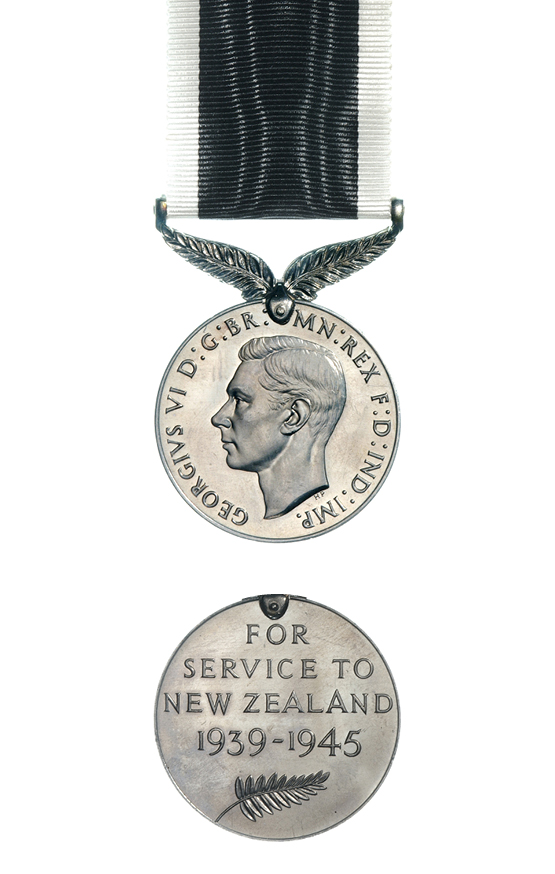
The New Zealand War Service Medal was awarded for 28 days’ full time service or six months’ part time service in the Second World War in any of the New Zealand Armed Forces including the Reserves, Naval Auxiliary Patrol Service, or Home Guard, between 3 September 1939 and 2 September 1945.

